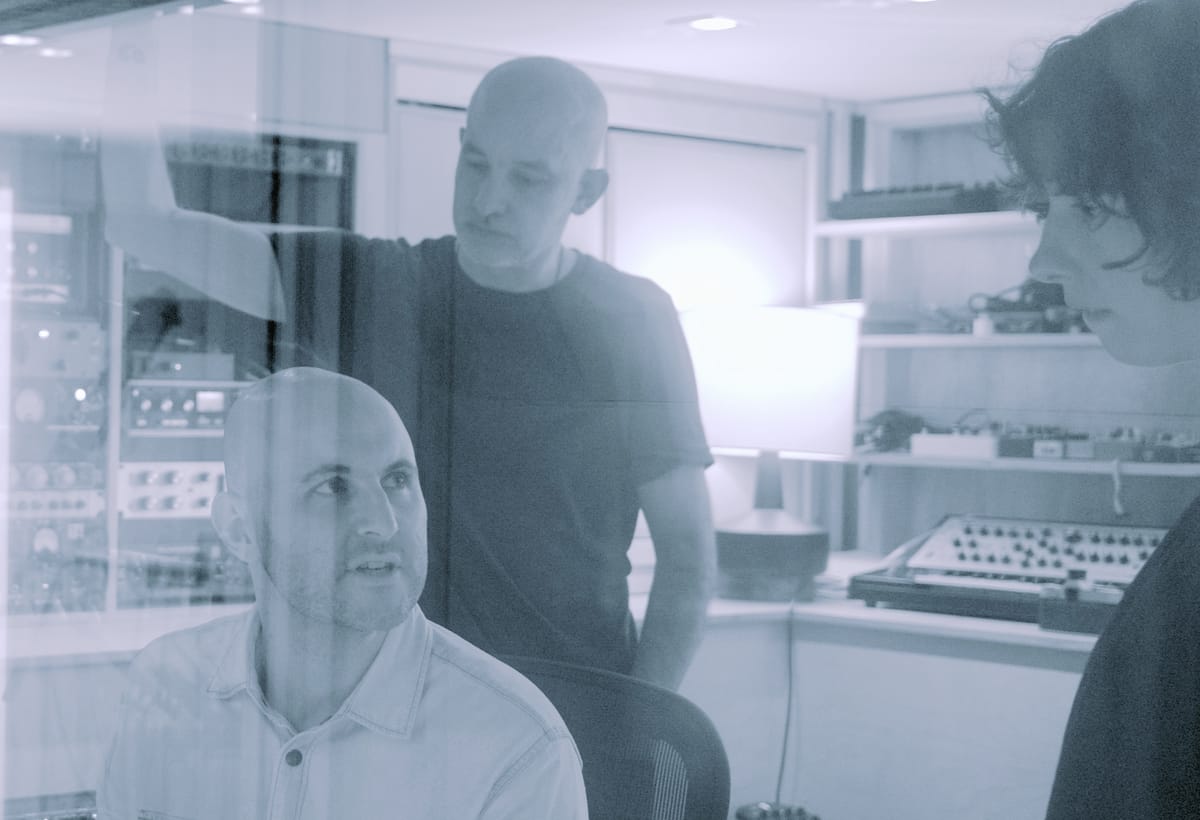Ambient music is a genre of music that focuses on creating a certain mood or atmosphere through the use of soundscapes, textures, and drones. It is typically characterized by its repetitive and meditative nature and often lacks traditional song structures and vocals.
The rise of ambient music in recent years has been driven by a number of factors. The main factors causing its rise include advances in technology that have made it easier to produce and distribute music. Further factors such as mental health consciousness and spirituality play a role.
This article looks at all aspects of ambient music ranging from its supposed benefits, potential disadvantages and more.
History of Ambient Music
The history of ambient music can be traced back to the late 19th and early 20th centuries. It started with the development of early electronic instruments such as the Theremin and the Ondes Martenot. However, it was not until the 1970s that the genre began to take shape as a distinct style of music.
One of the most influential figures in the development of ambient music has been the British musician and producer Brian Eno. In the mid-1970s, Eno coined the term "ambient music" to describe music that was designed to be listened to in the background and create a calming and contemplative atmosphere. Eno's album Discreet Music (Obscure, 1975) is often cited as one of the first true ambient music albums.
Throughout the 1970s and 1980s, ambient music continued to evolve and gain popularity. Other notable ambient artists from this period include Tangerine Dream, Klaus Schulze, and Steve Roach. In the 1990s, ambient music began to incorporate elements of electronic dance music, with artists such as The Orb and Aphex Twin creating a more upbeat and danceable form of ambient music.
Today, ambient music continues to be a popular genre, with a wide range of artists and styles. Some contemporary ambient artists include Stars of the Lid, William Basinski, Tim Hecker, and FKA Twigs. Ambient music has also had a significant influence on other genres of music, including electronic dance music, post-rock, and experimental music.
Benefits of Ambient Music
In recent years, the ambient music genre has been growing at a fast rate due to its purported benefits. These include:
- Relaxation: Ambient music can help to create a relaxing and soothing atmosphere. This can be beneficial for people who are looking to reduce stress and anxiety.
- Improves Concentration: It can also be used as a tool for meditation and mindfulness, helping to create a focused and calm state of mind.
- To Create a Calming Environment: Ambient music is often used in public spaces such as airports, shopping centers, and hotels to create a more pleasant and calming environment for visitors.
Disadvantages of Ambient Music
There are some disadvantages that make ambient music less interesting to some people; they are as follows:
- Some people may find ambient music to be boring or uninteresting, as the repetitive nature of ambient music can be a turn-off for some listeners.
- Critics argue that the rise of ambient music has led to a homogenization of sound, with many artists producing music that sounds similar to one another.
- The rise of ambient music could lead to a decline in more traditional forms of music, as listeners become more accustomed to music that is designed to be background noise rather than the focus of their attention.
Overall, the rise of ambient music has both positive and negative aspects. While it can be a useful tool for relaxation and meditation, it also has its limitations and may not appeal to all listeners.
What Does Science Say About Ambient Music?
The claims of ambient music being a therapeutic tool have been partially backed up by science. There have been several scientific studies that have investigated the potential benefits of ambient music.
Reducing Stress and Anxiety
A study published in the Journal of Advanced Nursing found that ambient music can reduce anxiety levels in patients undergoing medical procedures. The study concluded that ambient music can have a calming effect on patients and may be useful in reducing stress and anxiety.
Improving Sleep Quality
Another study published in the Journal of Music Therapy found that ambient music can improve sleep quality in older adults. The study found that participants who listened to ambient music before bed had better sleep quality and felt more rested in the morning.
Enhancing Focus and Productivity
A study published in the Journal of Consumer Research found that ambient noise can enhance focus and productivity. The study found that moderate levels of ambient noise can improve performance on creative tasks and increase the level of abstract thinking.
Promoting Mindfulness and Meditation
A study published in the International Journal of Mental Health and Addiction found that ambient music can be an effective tool for promoting mindfulness and meditation. The study found that participants who listened to ambient music during meditation reported feeling more relaxed and focused.
These studies suggest that ambient music can have a positive impact on various aspects of our well-being. However, more research is needed to fully understand the potential benefits of ambient music.

The Spiritual Aspects of Ambient Music
Ambient music is often associated with its ability to create a contemplative and meditative atmosphere. The genre's emphasis on textures and soundscapes can create a sense of spaciousness and depth that encourages introspection and reflection. Here are some ways in which ambient music can be considered spiritual:
- Facilitating Meditation and Mindfulness: Ambient music is often used in meditation and mindfulness practices because it can help to create a calm and focused mental state. The repetitive and hypnotic nature of the music can help to quiet the mind and facilitate a deeper sense of introspection.
- Connecting With Nature: Ambient music often incorporates natural sounds, such as birdsong, waterfalls, and wind, which can evoke a sense of connection to the natural world. This connection to nature can be seen as a spiritual experience, as it encourages a sense of harmony and interconnectedness.
- Creating Sacred Space: Ambient music can be used to create a sacred space, whether in a spiritual context or simply in a personal setting. The music's ability to create a contemplative atmosphere can help to set the tone for prayer, ritual, or other spiritual practices.
- Encouraging Emotional Healing: Ambient music can be used as a tool for emotional healing, particularly in the context of spiritual practices. The music's ability to evoke a range of emotions, from peacefulness to melancholy, can help to facilitate the release of emotions and promote a sense of healing and wholeness.
Why is Ambient Music Getting Popular Now?
Ambient music has been gaining popularity in recent years for several reasons. The first factor leading to this is the advancement in technology.
The availability of affordable recording and production technology has made it easier for musicians to create ambient music without the need for expensive studio time or a large team. The rise of digital streaming services has also made it easier for artists to distribute their music and reach a wider audience.
The other factors that have led to the rise of ambient music are:
- Increasing interest in mindfulness and meditation
- Increasing awareness about mental health.
- Emphasis on atmosphere in popular culture
- Embracing ambient elements in other genres.
The rise in popularity of ambient music is likely due to a combination of technological advancements, cultural trends, and the genre's ability to create a peaceful and contemplative atmosphere. Many of these factors were magnified during the COVID lockdown.
Myths About Ambient Music Genre
There are several myths and misconceptions surrounding the ambient music genre. While this genre has been widely accepted as having the ability to heal and relax the mind, there are some misconceptions. Below are the myths about ambient music.
- Ambient Music is Boring: This is a common misconception about ambient music, as it is often associated with long, repetitive pieces that lack melody and structure. However, ambient music can be quite dynamic and expressive, featuring intricate soundscapes and textures that evoke a range of emotions.
- Ambient Music is Only for Relaxation: While ambient music is often used for relaxation and meditation purposes, it is not limited to these contexts. Many ambient artists explore a range of themes and emotions in their music, from introspection and contemplation to melancholy and nostalgia.
- Ambient Music is Easy to Create: While it is true that ambient music often involves a slower pace and less structured form, it is not necessarily easier to create than other genres of music. Creating effective ambient music requires a deep understanding of sound design, composition, and texture, as well as a keen sense of mood and atmosphere.
- Ambient Music is Background Music: While ambient music is often used as background music in various settings, it is not limited to this role. Many listeners engage with ambient music actively, using it as a tool for introspection, meditation, and emotional healing.
Ambient Music Today
In conclusion, ambient music is a genre that has gained increasing popularity in recent years due to its ability to create a contemplative and meditative atmosphere. It is a genre that often emphasizes texture, mood, and atmosphere over traditional song structures and lyrics.
While ambient music is often associated with relaxation and meditation, it has a broad range of styles and approaches. Many ambient artists explore a variety of themes and emotions in their music, from introspection and contemplation to melancholy and nostalgia. Ambient music can also be used in a variety of contexts, from film and TV soundtracks to virtual reality experiences.
Despite some common misconceptions, ambient music is not boring, easy to create, or limited to background music. It is a diverse and dynamic genre that requires a deep understanding of sound design, composition, and mood to create an effective piece.
Explore the latest music tagged as 'Ambient' on Bandcamp.
Check out these ambient-adjacent artists on The Tonearm:












Comments